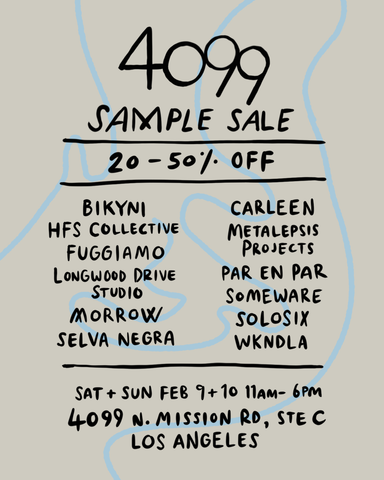
We are thrilled to have the opportunity to collaborate with artist Laura Sallade , who has a long history with glass, and lives and works in Philadelphia. We wanted to share more about Laura’s artistic journey, her unique approach to working with glass, and the creative process behind our collaboration.
MP: Laura, we’ve been following each other on instagram for a while now, and as far back as I can remember, you’ve always been working with glass. Can you tell us a bit about your practice and what initially drew you to glass as a material?
LS: Yes! It’s been great to follow Metalepsis all these years and even own a necklace of yours that I wore to my wedding and still love.
I started working with glass in 2012 when I was studying sculpture at the Pennsylvania Academy of Fine Arts. I found a number of architectural panels in a dumpster outside of the Academy of Natural Sciences in Philadelphia. I imagine they were used for some sort of exhibit and then were discarded when they lost their use value. I was really drawn to the material so I hauled it into my studio with a team of friends. PAFA was a classically based program with no glass working facilities, but I had a number of mentors who encouraged me to work experimentally–Rob Roesch, Steve Nocella, and John Grieg to name a few. I was so compelled by the material and its intrinsic relationship to light that I began to work within my limitations and manipulate it optically with chemical processes.
MP: I’ve really loved watching your work evolve—especially what you’ve been doing with glass lately. When I reached out about a possible collaboration, you said yes right away. What made this project feel like the right fit?
LS: I am currently researching ways to intercept discarded float glass on its way to the landfill and redirect it into streams of art and design production. Float glass is any pane of glass–from a window to shelf or a table top–and recycling centers in the US are not set up to process this particular type of glass. The pieces I used for this project I reclaimed from a department store in downtown Philadelphia that was being liquidated. I’m interested in trying out all kinds of ways that these discarded materials can be given a new life, so making vessels seemed like a great option to try!
Additionally, I’ve always loved design. Most of my practice grapples with paradox and presents more questions than answers, so a collaboration with a designer is a great way to exercise other modes of thinking and scratch my design itch.
MP: This series includes small serving objects—each with its own sculptural presence. What was interesting or challenging about creating functional objects like these?
LS: I am used to working in a way that often puts form over function. The primary function of my fine art is contemplation, so the forms I make usually have less limits. With that said, it was an interesting challenge to work together with Metalepsis and think through the functionality of these vessels while trusting that the form would follow. Now these objects can prompt contemplation while also holding blueberries. 🙂
MP: What surprised you—or maybe challenged you—during the process of creating these pieces together?
LS: The technique I used to make these vessels is called slumping. It’s essentially what it sounds like–I set up glass in specific positions and allow heat and gravity to work together to make something new. The challenge comes from working with many small pieces of broken glass and the need for pieces to both fuse together and slump. Because the slumping temperature is lower than the fusing temperature, pieces may slump out of position before they have a chance to fuse. It’s important to remember that the process is a sort of elemental concoction and I am just one variable. An unpredictable shift often happens in the kiln that can disappoint or be a delightful surprise. One thing I enjoyed is seeing the textures that formed when the glass was slumping and fusing at the same time. It might pull apart and stretch or press together and overlap. Whatever the outcome, I am reminded this glass has a vitality of its own.
MP: How do you want people to live with these pieces?
LS: I imagine these pieces dwelling in the open and being embedded into the mundane and sacred rituals of life–perhaps holding keys, berries, or a few special rings. They are most beautiful when in natural light, because glass can harness light in a way that no other material can.
MP: Are there any details or facts, or moments in the making process that you think people might not notice right away—but should?
LS: I personally love the edges of the pieces. Something about the line feels like movement to me, perhaps because it reminds me I only have so much control in the process.
MP: Where do you see your work heading in the next year? Anything you’re feeling pulled toward or curious to explore?
LS: It’s hard to say since I’m doing so much experimentation right now, but I’m interested in doing more public work. I think it’s so important for art to exist as a contemplative touchstone within the every-day routine and not just in exclusionary white cube spaces.
Quick Favorites!
Just for fun—whatever comes to mind first.
Favorite studio tool:
LS: Tig Welder
An artist, designer, or influence you’re currently obsessed with:
LS: Letha Wilson
What’s playing in the studio lately? (Music, podcast, anything!)
LS: Coffee Break French. Brushing up on my language skills!
Thank you!
x Victoria
Posted in
art,
artist,
collaboration,
glass
Posted in
events,
los angeles,
pop-up,
sample sale

Pick up the Instyle May issue magazine to find some of the best spring buys, including our Spinner and Proton rings!

Posted in
instyle,
kinetic,
magazine,
orbital,
press,
proton ring,
rings,
spinner ring
Metalepsis Projects and Kinetic edition on The Zoe Report today!

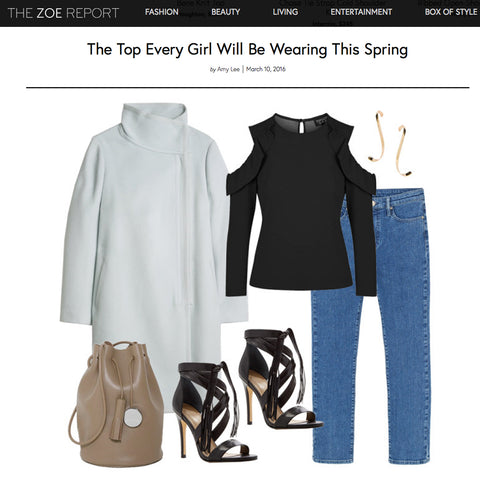
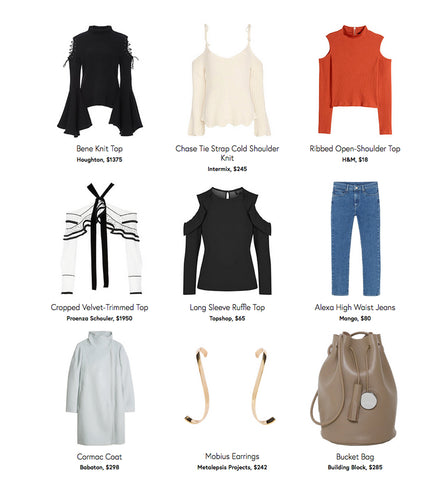
Posted in
kinetic edition,
mobius earrings,
online,
outfit,
press,
thezoereport
Posted in
calder collar,
kinetic edition,
news,
nylon,
nylonmag,
press
As we continue our exploration with technology and push the boundaries of 3D-printing, Jessica Schiffer from WhoWhatWear featured our MetalepsisXChromat 3D printed nylon pieces as 'unlike anything else we've seen'.
check out the rest of the story here!
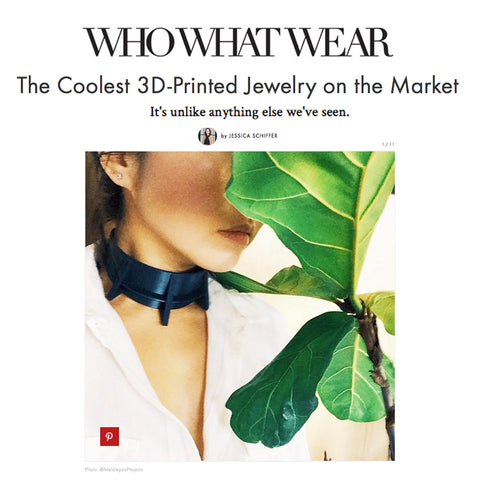


Join us 9/24-9/27 as we are exhibited in London as a part of London Design Festival curated by Matter of Stuff.
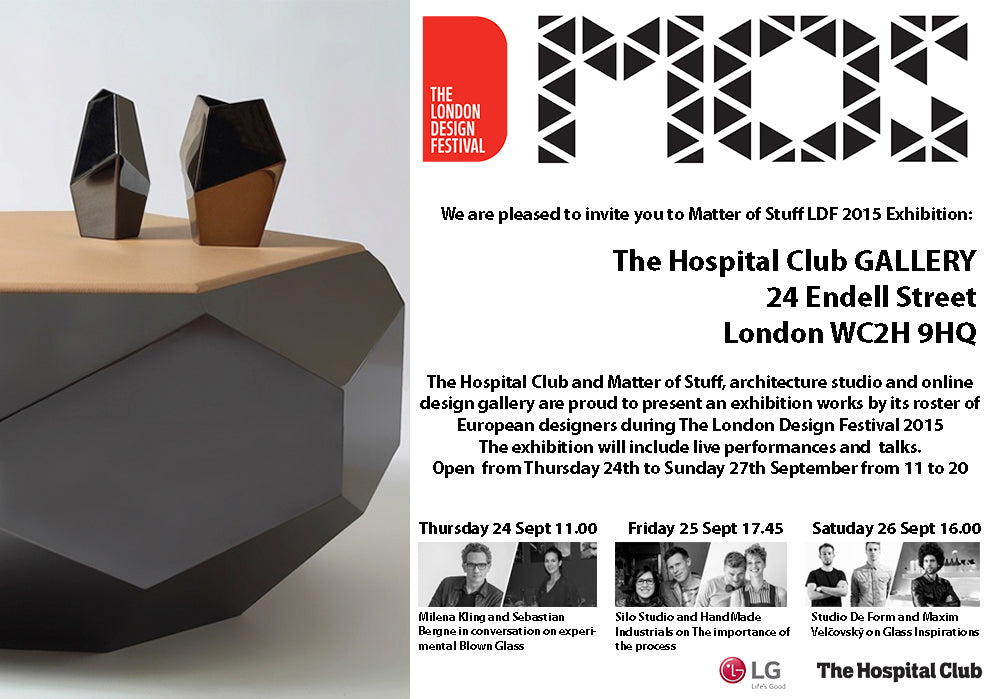
Posted in
london,
news,
orbital edition,
press
Fashion designer Iris van Herpen is known for her innovative approach to fashion and use of technology. For every collection Iris van Herpen designs, science plays an important role is her design process. Magnetic fields, 3D printing, and water are some of the materials she uses. She explores movement in relation the human body, having her garments change shape both while being worn and at rest. For her 3D printed transparent spike dress, she collaborated with architect Niccolo Casas, where there objective was to make a dress that embodied complexity and movement, and reacted to the body’s movement.
For her Spring/Summer 2015 collection she was inspired by magnetic fields. To make a her accessories she manipulated metal infused materials with magnets, making each piece appear slightly different.
The Crystallization dress was a collaboration between film director, Nick Knight and Daphne Guinness during a live broadcast. Daphne Guinness was captured being splashed with black and clear water using high speed cameras. Iris then used this footage to create the water dress.
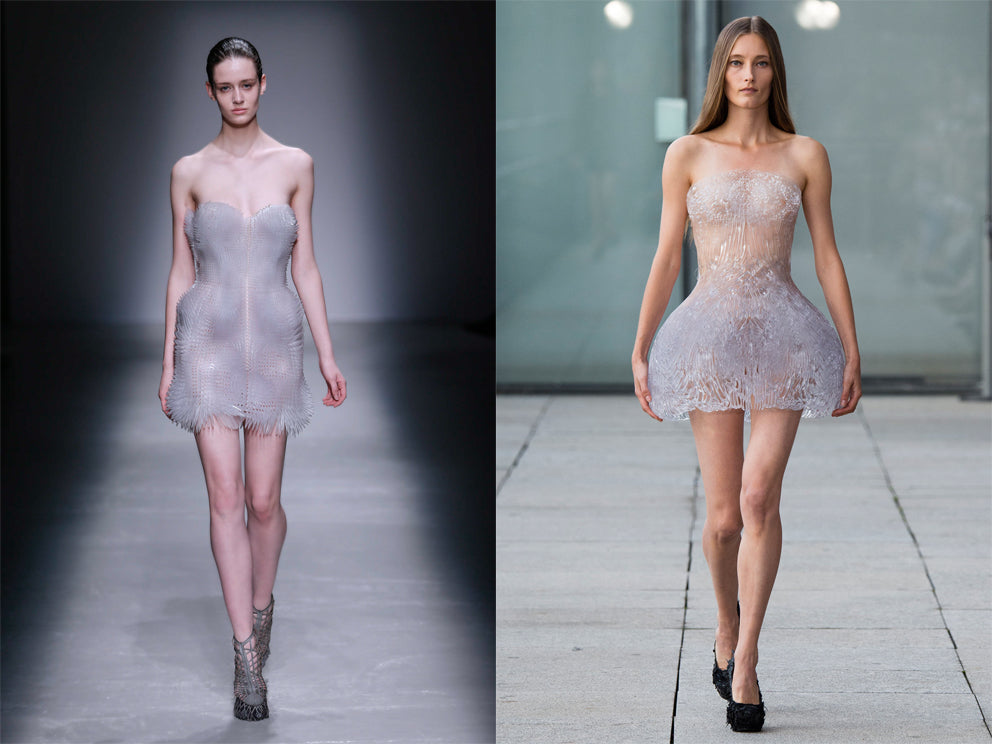


Sarah Oppenheimer creates installations that make the viewer question the physical space. She obscures and transforms ordinary rooms into spaces that manipulate the viewer’s perception of the physical space. She cuts angled holes in the walls to abstract the corners, making them seem like they could open like an accordion while waking through them. Visitors have even reported cases of vertigo. Although it is possible to walk through the holes, it still requires you to be very aware of your movements.
The lighting in the room plays an important role in contributing to the overall feeling. Oppenheimer adjusts the lighting according to what the predicted temperature of light in each room will be, and adjusts the illumination so that the solid painted white walls contain various tints. From a distance, the corners almost appear as abstract flat surfaces.
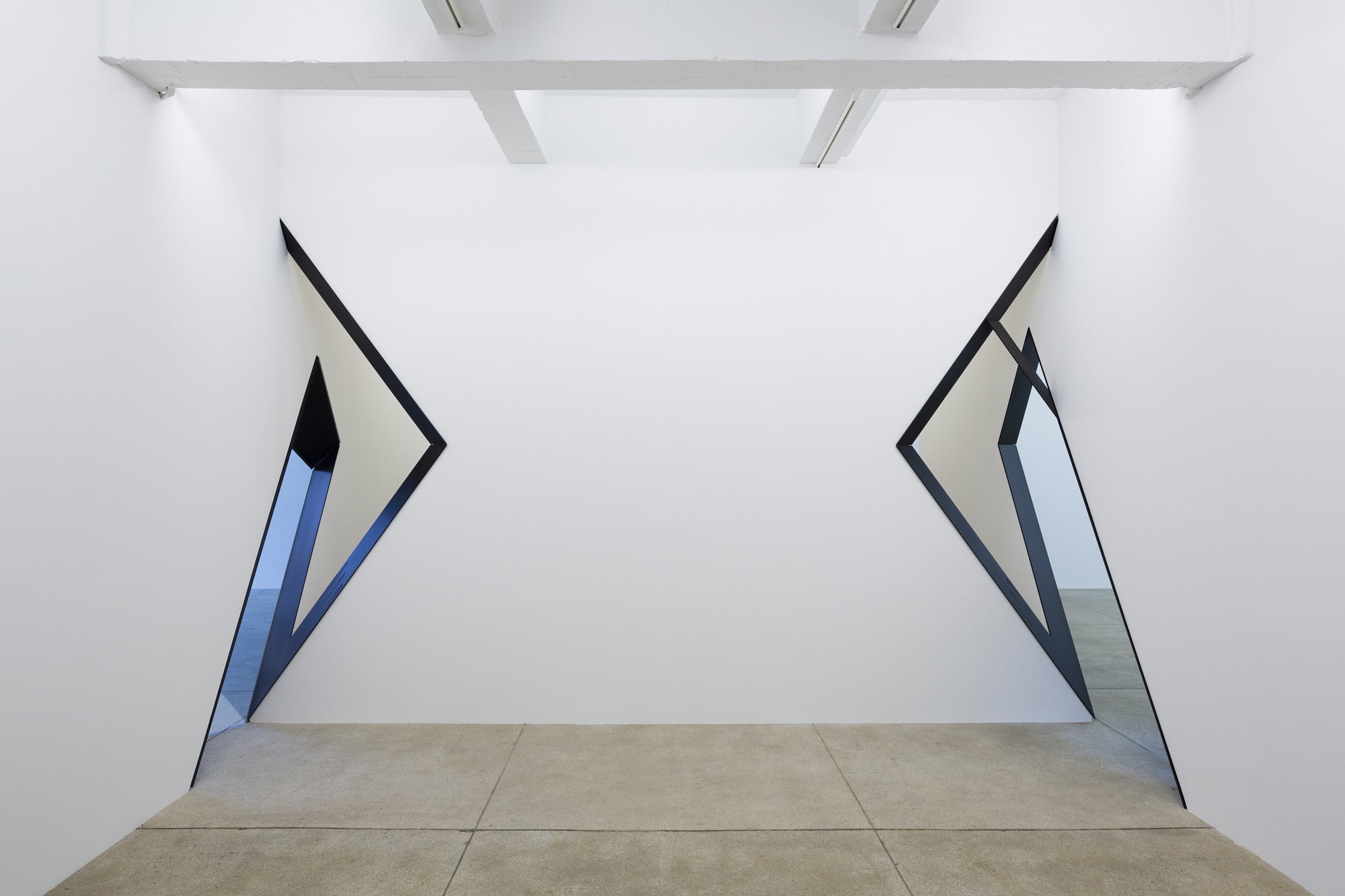

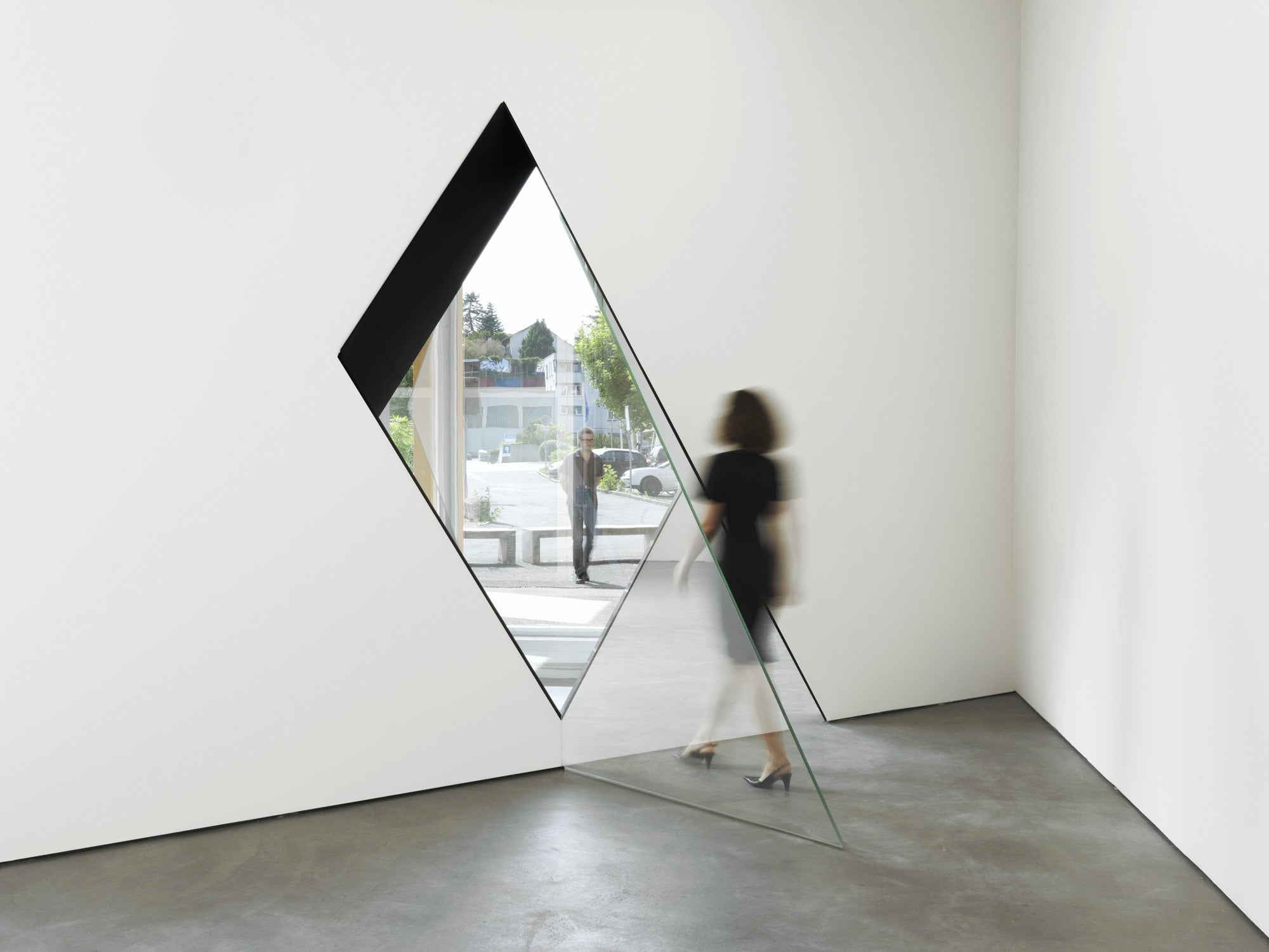

Posted in
architecture,
art,
design,
gallery,
oppenheimer,
sculpture,
space


